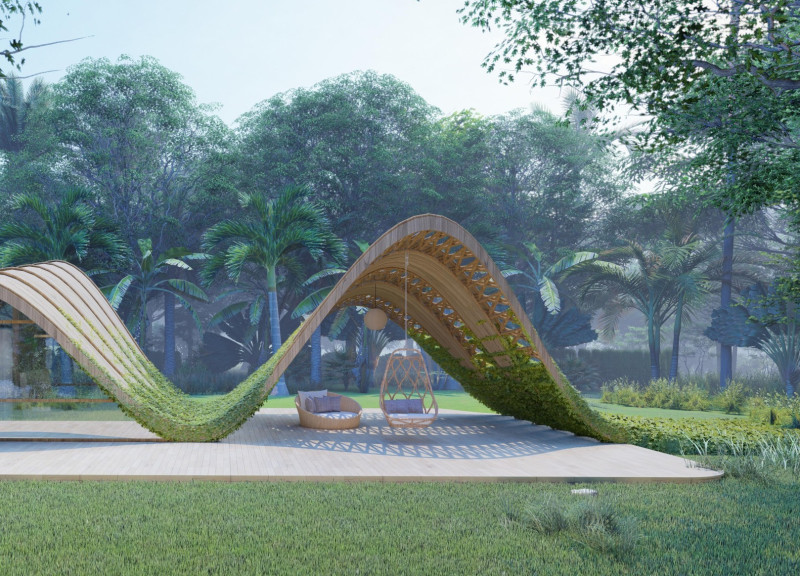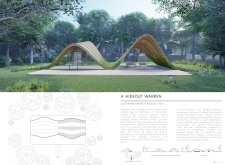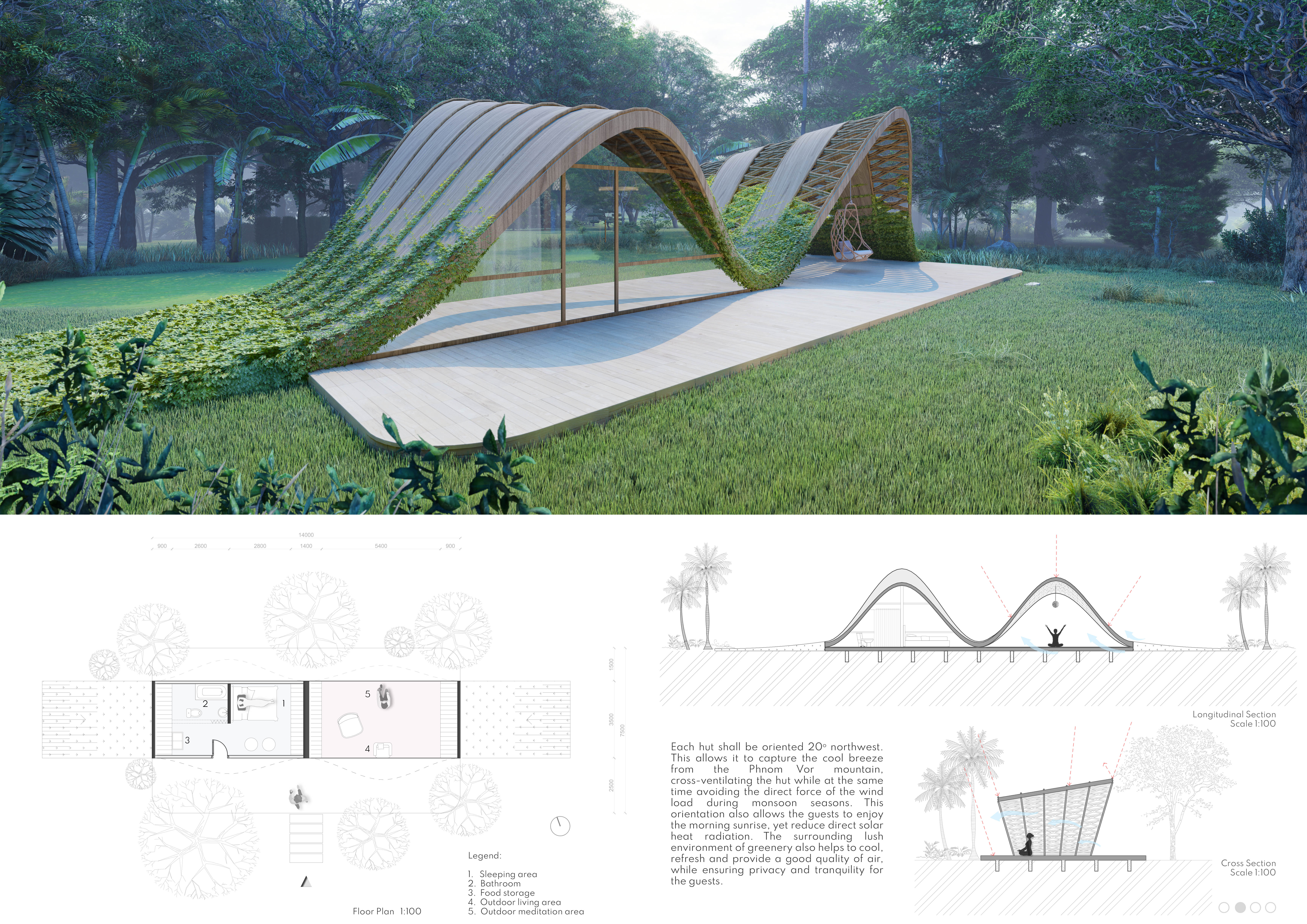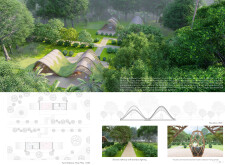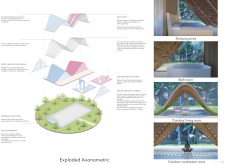5 key facts about this project
The Hideout Warren project is located in Vine Retreat, where it incorporates a series of unique huts inspired by rabbit burrows. The aim is to create spaces for sustainable living that provide both private retreats and options for communal gatherings. The design pays close attention to the natural surroundings, allowing visitors to find comfort in a beautiful landscape.
Orientation and Functionality
Each hut is carefully oriented to take advantage of the cool breezes from the nearby Phnom Vor mountain. This orientation enhances cross-ventilation, which helps keep the interiors cool. Additionally, the design mitigates the effects of wind during the monsoon season. This thoughtful approach allows guests to enjoy morning sunlight while minimizing heat gain throughout the day.
Integration with Nature
Thick greenery surrounds the huts, ensuring privacy and a sense of seclusion. The outdoor areas, known as "false dens," provide sheltered spaces that allow guests to connect with nature. In contrast, the indoor areas, referred to as "real warrens," feature curtain walls that frame picturesque views of the landscape. This connection between indoor and outdoor spaces enhances the visitor experience.
Materiality
The main construction material used is bamboo, reflecting a commitment to sustainability. Bamboo is lightweight and renewable, making it suitable for the huts while contributing to their overall aesthetic. This choice of material aligns with the project's focus on environmental harmony, as it blends well with the natural setting.
Each hut also features a slanted roof design that reduces glare and channels rainwater for use in gardens and toilets. This design detail emphasizes efficient resource management and adds functionality to the overall concept.


